As mentioned in my bio I was born in Huntington, WV. Huntington was a special place not only because my paternal grandparents lived there but their home was located only three blocks from the Chesapeake & Ohio Railway passenger station. The passenger station in Huntington also served as a division headquarters for the C&O. The railway’s locomotive shops were located in the east end of the city. The shops performed major repairs of locomotives during the steam era and into the diesel age.
 C&O Train #3 The Fast Flying Virginian preparing to leave Huntington westbound on a warm July day in 1966 towards its final destination of Cincinnati. Huntington was a crew change point for passenger trains only. Also one of the three E8 units was removed from the train for servicing plus the extra power was not needed westbound because of the relatively flat profile of the C&O route along the Ohio river. The FFV was C&O’s only daytime passenger train through the Huntington area. In a little less than two years that would change.
C&O Train #3 The Fast Flying Virginian preparing to leave Huntington westbound on a warm July day in 1966 towards its final destination of Cincinnati. Huntington was a crew change point for passenger trains only. Also one of the three E8 units was removed from the train for servicing plus the extra power was not needed westbound because of the relatively flat profile of the C&O route along the Ohio river. The FFV was C&O’s only daytime passenger train through the Huntington area. In a little less than two years that would change.
I was fortunate that my grandparents lived as close to the station as they did. When I decided to attend Marshall University I was even more fortunate that I was able to live with them. This gave me many opportunities to make the short walk to the station to photograph trains. I always enjoyed sitting on one of the baggage carts usually parked in the shade provided by the umbrella shed and waiting for the next train to pass by. Since the station was adjacent to the yard, it also provided opportunities to photograph yard movements.
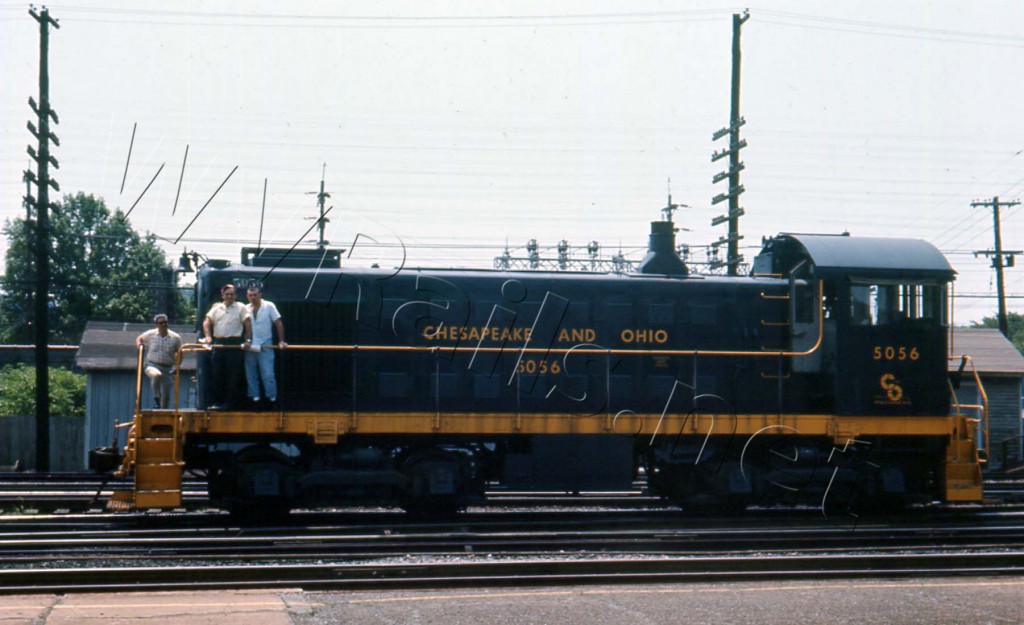 The crew of Alco-GE S2 switcher saw me with my camera and stopped their switching duties long enough for a picture. I have to admit that I was not ready to take the picture as I had just arrived by foot but they were very patient. Regretfully I did not get their names but as I now think back, they might have enjoyed having a copy of this photo.
The crew of Alco-GE S2 switcher saw me with my camera and stopped their switching duties long enough for a picture. I have to admit that I was not ready to take the picture as I had just arrived by foot but they were very patient. Regretfully I did not get their names but as I now think back, they might have enjoyed having a copy of this photo.
On February 4, 1963 the C&O acquired control of the Baltimore and Ohio Railroad which was the oldest railroad in the United States at that time. After a couple of years, B&O’s operations from the east end of Huntington to Kenova were changed. This resulted in the retirement of 11.6 miles of B&O main except for some trackage left to serve industries. Because of this, B&O’s daily trains up the Ohio River to Parkersburg, WV were relocated to the C&O yard. Bob Withers’ book “Trackside Around West Virginia” published by Morning Sun Books documents in detail how the consolidation was accomplished.
B&O Train #104 being assembled in the C&O Yard for its late afternoon run to Parkersburg. Photo on left shows C&O hostler (Alco S2) assisting in make up of train. B&O GP unit in its original paint scheme will be leading C&O F7 after the hostler is cutoff. Baldwin AS-616 is making up the rear of #104. On certain days passenger service to Parkersburg was provided on the caboose.
While this post focuses on photos taken around the station area, I plan to have other photos of the C&O around Huntington in Part II. Stay tuned. Meanwhile enjoy some more photos on this post.
Eastbound C&O freight headed by an interesting combo of EMD F7, GP-7 and Alco S2. Unfortunately it was blocked from view by a switching move in the yard. F units in the mid 1960’s were becoming a rare item.
C&O’s GP7 and GP9s were the work horses for manifest freights as well coal trains. Here we see GP9 #6090 at the helm leading two sister units westbound into setting sun on a late September 1967 evening.
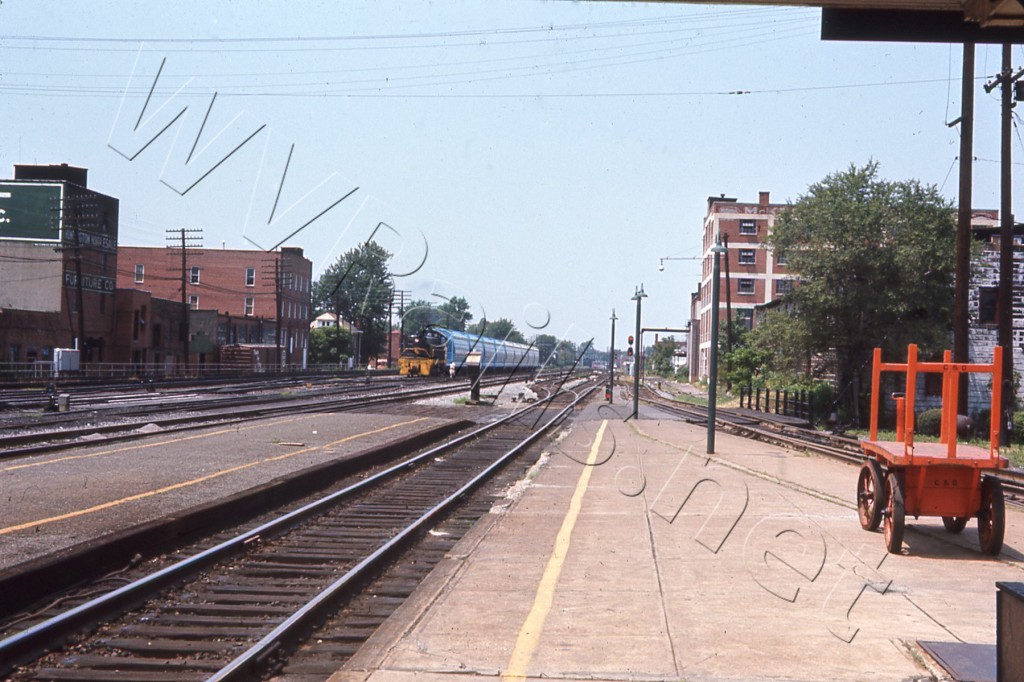 As noted earlier watching trains from the C&O station was quite enjoyable. Baggage carts like that shown above made a nice place to sit to observe and photograph trains. This view is looking westbound. The switcher coupled to the new ACF Center Flow hoppers built in Huntington was the same one shown earlier that blocked out the eastbound train.
As noted earlier watching trains from the C&O station was quite enjoyable. Baggage carts like that shown above made a nice place to sit to observe and photograph trains. This view is looking westbound. The switcher coupled to the new ACF Center Flow hoppers built in Huntington was the same one shown earlier that blocked out the eastbound train.
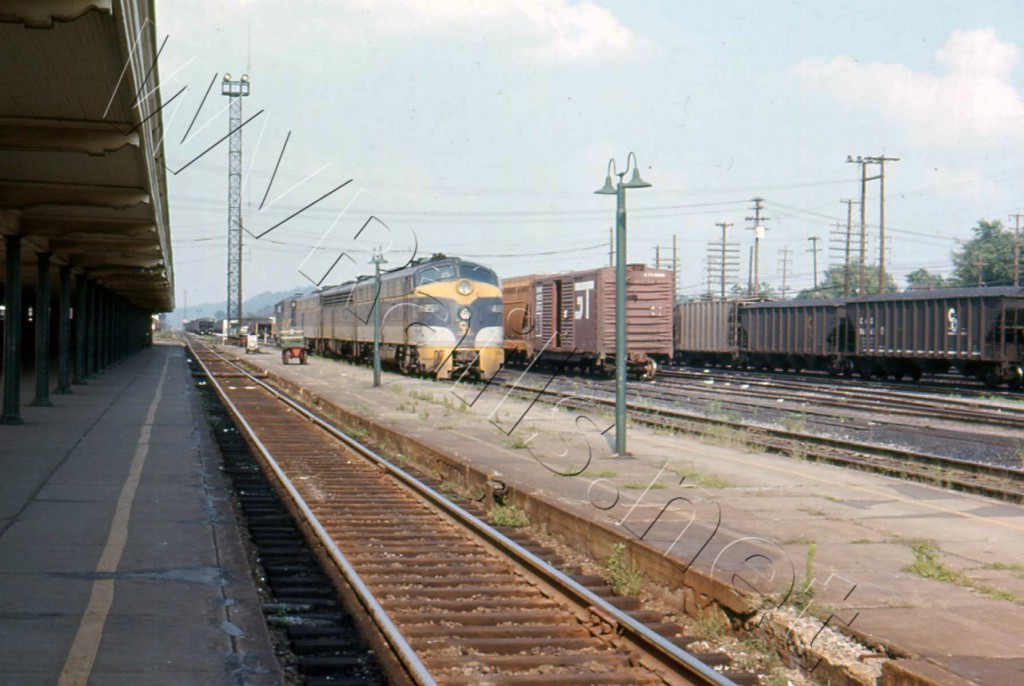 A view of the Huntington Yard looking eastbound. This was taken in August of 1967 during the rail strike by one of the unions. It was unusual to see motive power parked outside of the locomotive shops. I was told by someone that the units were there for standby power. I suppose this made it easier for management to retrieve extra power there rather than cross picket lines at the shops.
A view of the Huntington Yard looking eastbound. This was taken in August of 1967 during the rail strike by one of the unions. It was unusual to see motive power parked outside of the locomotive shops. I was told by someone that the units were there for standby power. I suppose this made it easier for management to retrieve extra power there rather than cross picket lines at the shops.
On a late summer day in August 1966 B&O Train #104 awaits departure from the C&O yard. The picture on the right shows compressed air lines (red rubber lines) lying around the track. They are used to pump up the train line air and test brakes on the caboose and cars coupled to it.
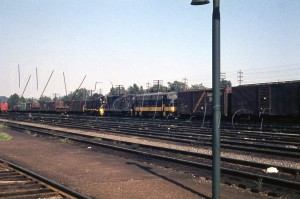
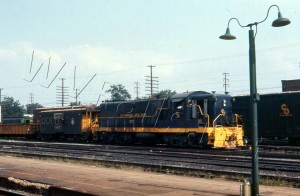


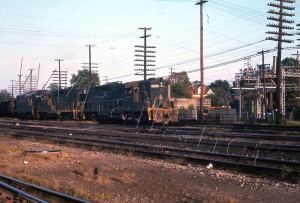
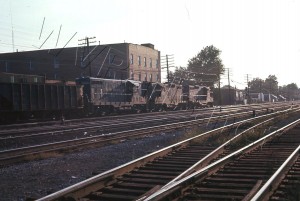

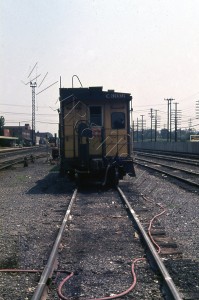
Recent Comments